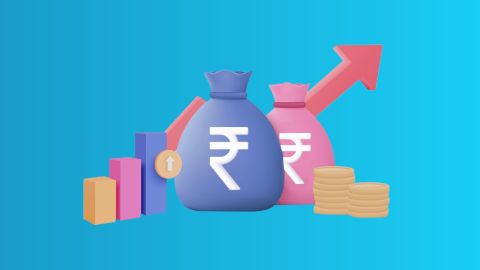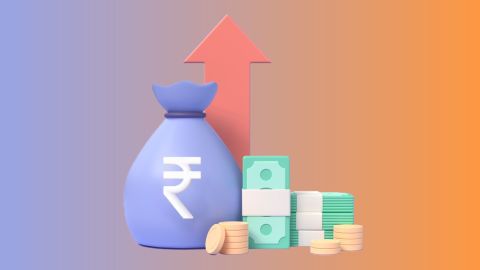Unlike regular exports, deemed exports are taxed at the point of supply, and the supplier may claim a refund of GST paid. The concept ensures that goods supplied under certain conditions are treated as exports, providing relief from domestic taxes.
What are deemed exports under GST?
Deemed exports under GST refer to specific transactions where goods supplied do not leave the country, yet are considered exports for tax benefits. According to the CGST Act, these include supplies to Export-Oriented Units (EOUs), Special Economic Zones (SEZs), projects funded by international agencies, and goods used in manufacturing or production for export.
Places of supply determined for deemed exports
Determining the place of supply for deemed exports is crucial for GST compliance. It defines the location of the transaction, impacting the tax jurisdiction and applicable rates. In deemed exports, the place of supply is often the location where goods are delivered, even if the recipient uses them for further manufacturing or export purposes. This is particularly relevant in transactions involving EOUs, SEZs, and other specified entities. Correctly identifying the place of supply ensures accurate GST filing and adherence to tax regulations.
1. Supply to export-oriented units (EOUs)
Supplies to EOUs are considered deemed exports under GST, providing significant tax benefits. EOUs are units dedicated to exporting goods and services. When suppliers provide goods to these units, they can claim a refund of the GST paid on such supplies. This mechanism helps reduce the cost burden on EOUs and promotes exports from India.
2. Supply to special economic zones (SEZs)
Supplies to SEZs qualify as deemed exports under GST, providing a tax-neutral supply chain. SEZs are designated zones with special economic regulations to promote exports and investments. When goods are supplied to units within SEZs, they are treated as zero-rated supplies, meaning the supplier can claim a refund of the GST paid. This incentivises businesses to operate within SEZs, boosting India's export capacity.
3. Supply to projects funded by multilateral or bilateral agencies
Supplies to projects funded by multilateral or bilateral agencies are treated as deemed exports under GST. These projects, often funded by international organisations or governments, aim to promote development and cooperation. Suppliers to such projects can claim a refund of the GST paid, ensuring the cost-effectiveness of these initiatives. This provision facilitates smooth operations of internationally funded projects in India.
4. Supply for goods to be used in manufacturing or production of goods for export
Supplying goods used in manufacturing or producing goods for export is considered deemed exports under GST. This provision supports manufacturers who produce export goods by allowing them to claim a refund of the GST paid on inputs. It reduces the overall cost of production, making Indian goods more competitive in the global market. This mechanism is crucial for industries focused on international trade.
What categories of transactions qualify as deemed exports?
Deemed exports under GST encompass various transactions where goods are supplied within India but are treated as exports for tax purposes. These include supplies to Advance Authorisation (AA) holders, units in specific economic zones, and capital goods supplied to Export Promotion Capital Goods Authorisation (EPCG) holders. Additionally, the supply of gold by banks or PSUs against Advance Authorisation is considered deemed exports. These transactions, though not involving the physical export of goods, are granted export benefits under the CGST Act.
Supply to advance authorisation (AA) holder:
Supply to an AA holder qualifies as deemed exports under GST. Advance Authorisation is a scheme that allows duty-free import of inputs used in the production of export goods. When domestic suppliers provide goods to AA holders, they can claim a refund of the GST paid on such supplies. This mechanism reduces the input costs for exporters, promoting India's export competitiveness.
Supplying capital goods to a recipient holding an export promotion capital goods authorisation (EPCG):
Supplying capital goods to EPCG holders is recognised as deemed exports under GST. The EPCG scheme allows the import of capital goods at zero or concessional duty rates, provided they are used for producing export goods. Domestic suppliers providing such capital goods can claim a refund of the GST paid, lowering the capital investment cost for exporters. This scheme encourages modernisation and technological upgradation in export-oriented industries.
Supply to units in specific economic zones:
Supplies to units in specific economic zones are treated as deemed exports under GST. These zones, such as SEZs and EOUs, offer special incentives and tax benefits to promote exports. Goods supplied to these units are zero-rated, allowing suppliers to claim refunds on GST paid. This facilitates a seamless supply chain and reduces the cost burden on units operating in these zones, boosting export growth.
Supply of gold by a bank or PSU against advance authorisation (AA):
The supply of gold by banks or PSUs against Advance Authorisation qualifies as deemed exports under GST. Under this arrangement, banks and PSUs provide gold to jewellery manufacturers who hold Advance Authorisation, allowing them to import duty-free inputs for export production. The GST paid on such supplies can be refunded, ensuring cost efficiency for jewellery exporters. This provision supports India's gold and jewellery industry by reducing input costs.
Additional conditions for deemed exports to EHTP/STP/BTP units
- Eligibility: Only supplies to units registered under the Export Oriented Units Scheme are considered.
- Documentation: Proper documentation, including a supply invoice and shipping bill, is mandatory.
- Application: Suppliers must apply for refund of GST within six months from the date of supply.
- Compliance: Units must comply with the guidelines set by the Development Commissioner.
- Refund claims: Refund claims are subject to verification by the tax authorities.
Application of GST rates on deemed exports
- Standard rates: Deemed exports attract GST at standard rates applicable to the supplied goods.
- Zero-rated supply: In some cases, deemed exports may be treated as zero-rated, allowing for a refund claim.
- Rate notifications: GST rates for deemed exports are subject to periodic updates and notifications by the GST Council.
- Input tax credit: Suppliers can claim an input tax credit for GST paid on inputs used for deemed exports.
- Differential rates: Different goods may attract different GST rates based on HSN codes.
How are deemed exports taxed under GST?
- Tax liability: Deemed exports are taxed at the point of supply, not at the point of export.
- Zero-rating: Certain deemed exports are considered zero-rated, allowing for a GST refund.
- Tax refund: Suppliers can claim a refund of GST paid on deemed exports.
- No IGST levy: No Integrated GST (IGST) is levied on deemed exports, as they do not cross national borders.
- Compliance: Proper documentation and compliance with GST regulations are mandatory for claiming tax benefits.
Procedure to claim a refund on deemed exports under GST
- Filing application: Suppliers must file a refund application using Form GST RFD-01 on the GST portal.
- Documentation: Submit invoices, shipping bills, and other supporting documents.
- Verification: The GST authorities verify the application and documents.
- Refund sanction: Upon verification, the refund is sanctioned and credited to the supplier's account.
- Input tax credit: Ensure proper utilisation of input tax credit while claiming the refund.
GST filing requirements for deemed exports
GST filing requirements for deemed exports include maintaining proper records, filing regular returns, and adhering to GST compliance norms. Suppliers must accurately report deemed exports in their GST returns, including the GSTIN, HSN code, and value of supplies. The GST return must detail the tax paid and the refund claimed for deemed exports. It's crucial to follow the prescribed format and timelines for filing these returns to avoid penalties and ensure the smooth processing of refund claims. Accurate reporting ensures compliance with GST regulations and facilitates the efficient functioning of businesses, enabling them to benefit from the tax provisions related to deemed exports.
Conclusion
Deemed exports under GST provide significant benefits to businesses engaged in specific transactions, such as supplies to EOUs, SEZs, and projects funded by international agencies. Proper understanding and compliance with GST regulations, including filing requirements and tax rates, are crucial for availing these benefits. Businesses must ensure accurate documentation and timely filing to claim refunds and optimise their tax liabilities.
Explore the Bajaj Finserv Business Loan
Here are some of the key advantages of our business loan that make it an ideal choice for your business expenses:
- Simplified application process: Online applications streamline the process, reducing paperwork and saving time.
- High loan amount: Businesses can borrow funds up to Rs. 80 lakh, depending on their needs and qualification.
- Quick disbursal: Funds can be received in as little as 48 hours of approval, allowing businesses to respond promptly to opportunities and needs.
- Competitive interest rates: The interest rates for our business loans range from 14 to 26 per annum.




